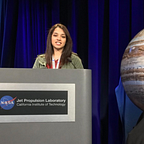Iconic Space Images #6
Earthrise
On Christmas Eve, 1968, the crew of Apollo 8, the first human spaceflight beyond earth’s orbit, read out verses in turn from the Book of Genesis. This televised event was the most watched broadcast of all time then. Later, they noticed the earth rising beyond the moon. They dug out their cameras and astronaut Bill Anders gave us what is often described as the most influential environmental photograph ever taken.
The amount of lunar surface visible in the picture is about 175 km and is over 750 km away from the craft that is in orbit. The part of the earth in daylight is Africa, the Atlantic Ocean, and Antarctica towards the north left corner. Numerous large storms on the water body is visible.
This image is also particularly special because of the science behind it. Since the moon and earth are tidally locked, i.e., the same side of the moon faces the earth always, the moon has a fixed sky too. From the Near Side of the moon, the earth is always stationary in the sky. The “rise” of earth is visible only when the camera is in motion relative to the moon. As the Apollo 8 craft was in orbit, they caught the earth slowly becoming visible as they came up.
Subsequent Earthrise images have been taken from the lunar surface as well. The earth would mostly be fixed in the sky, but since the moon wobbles, we see a bit more of the earth at times.
Every 2 weeks we send out a newsletter giving you an update of all that is happening at TeamIndus and opportunities for you to engage with us.
